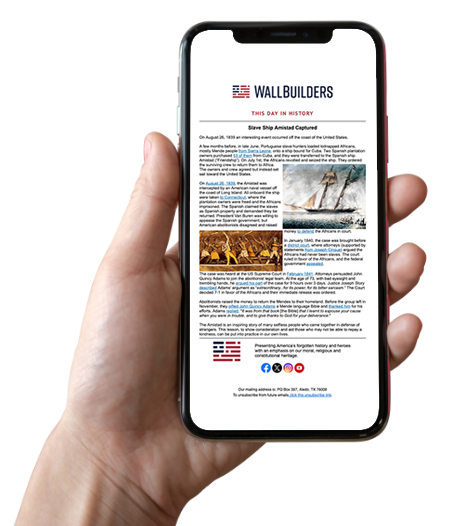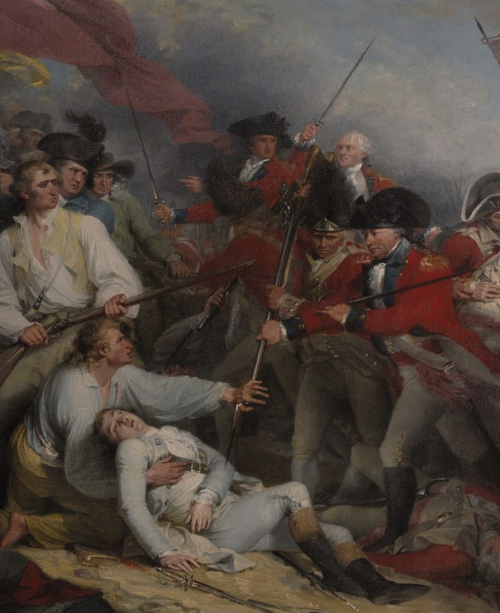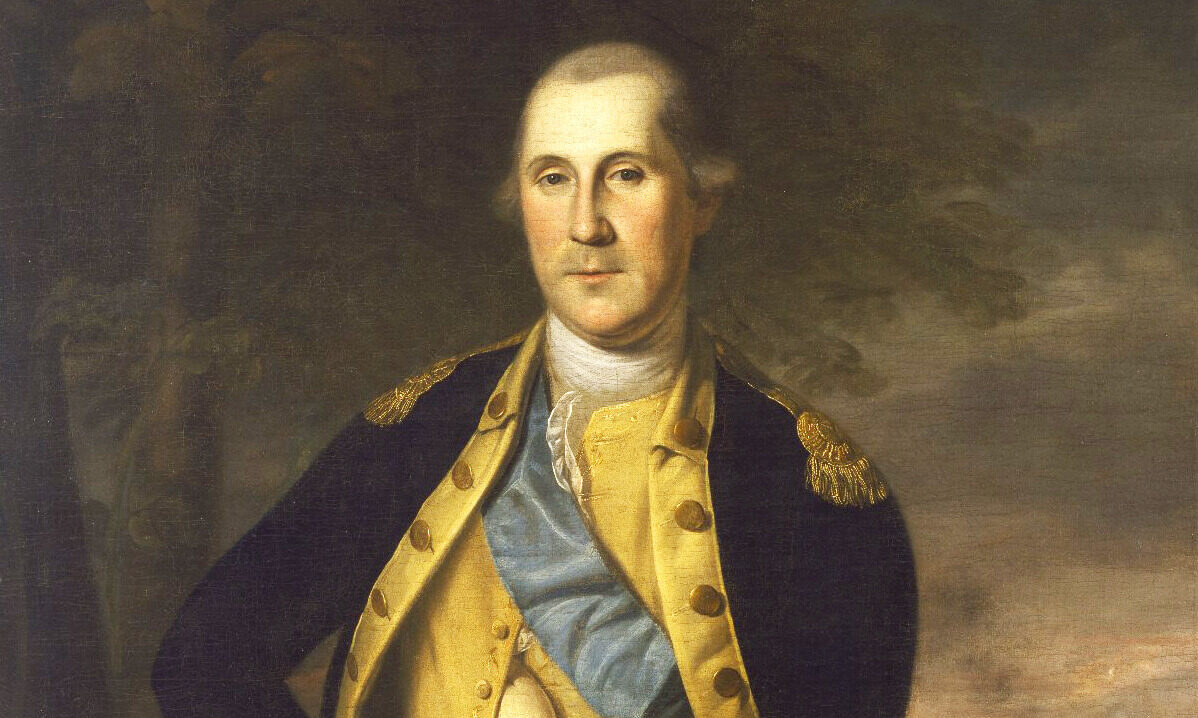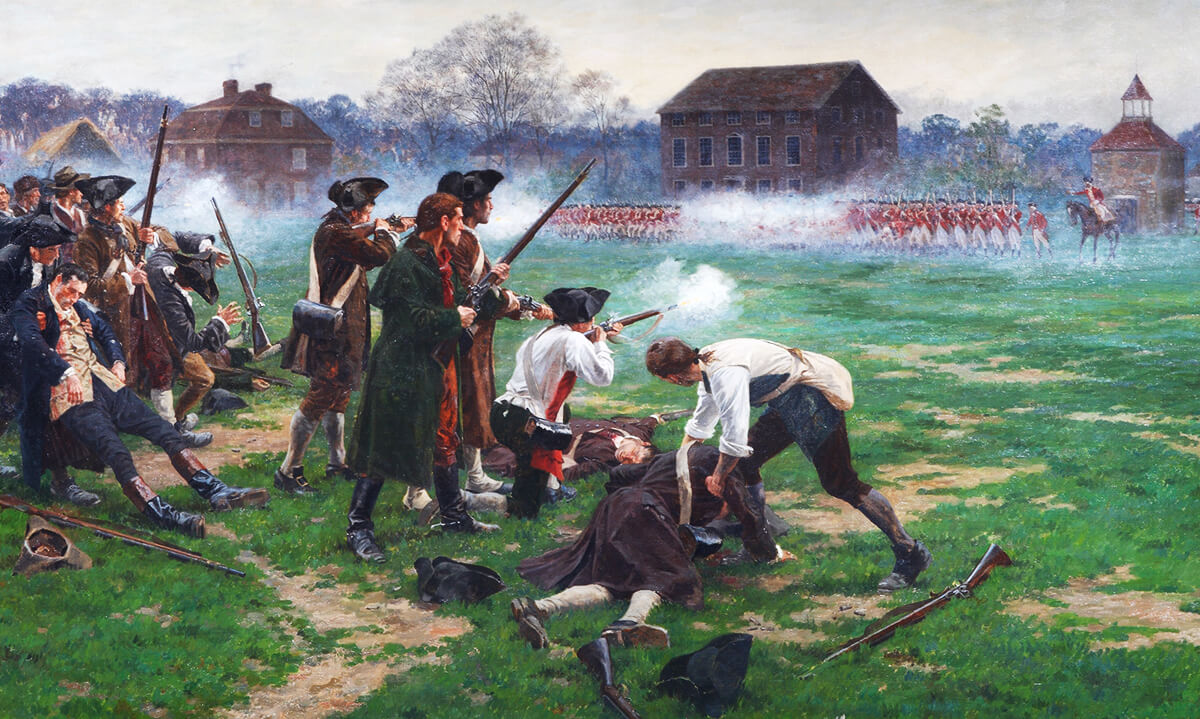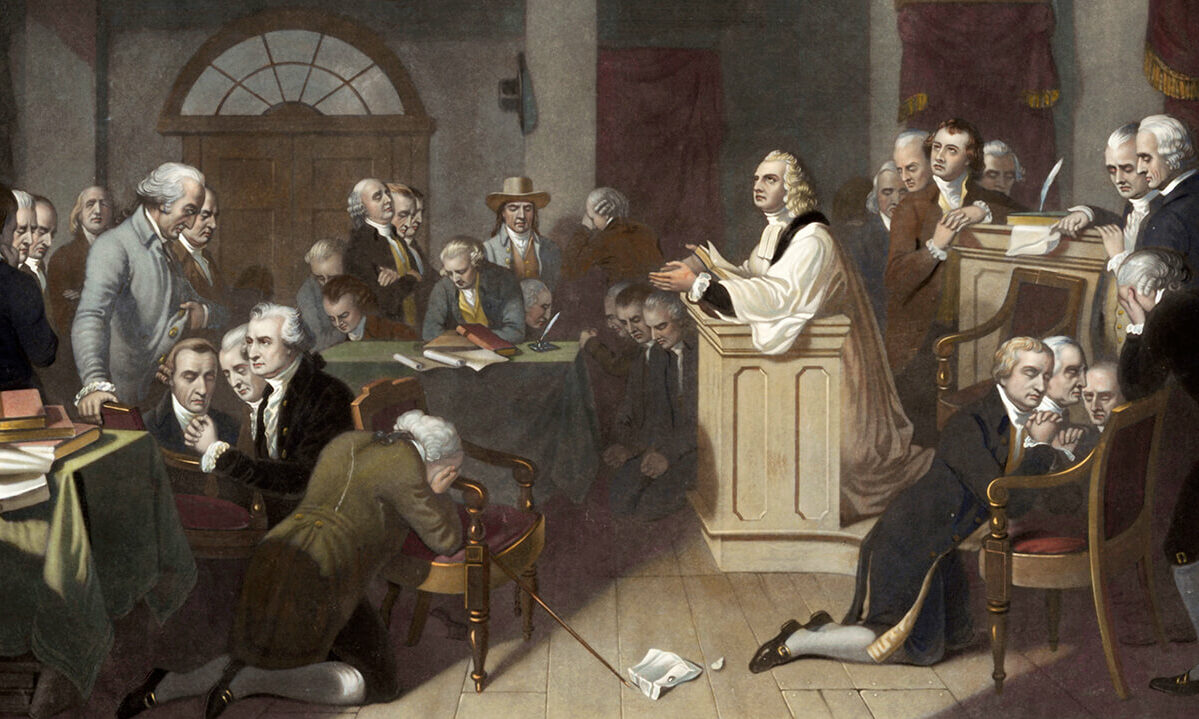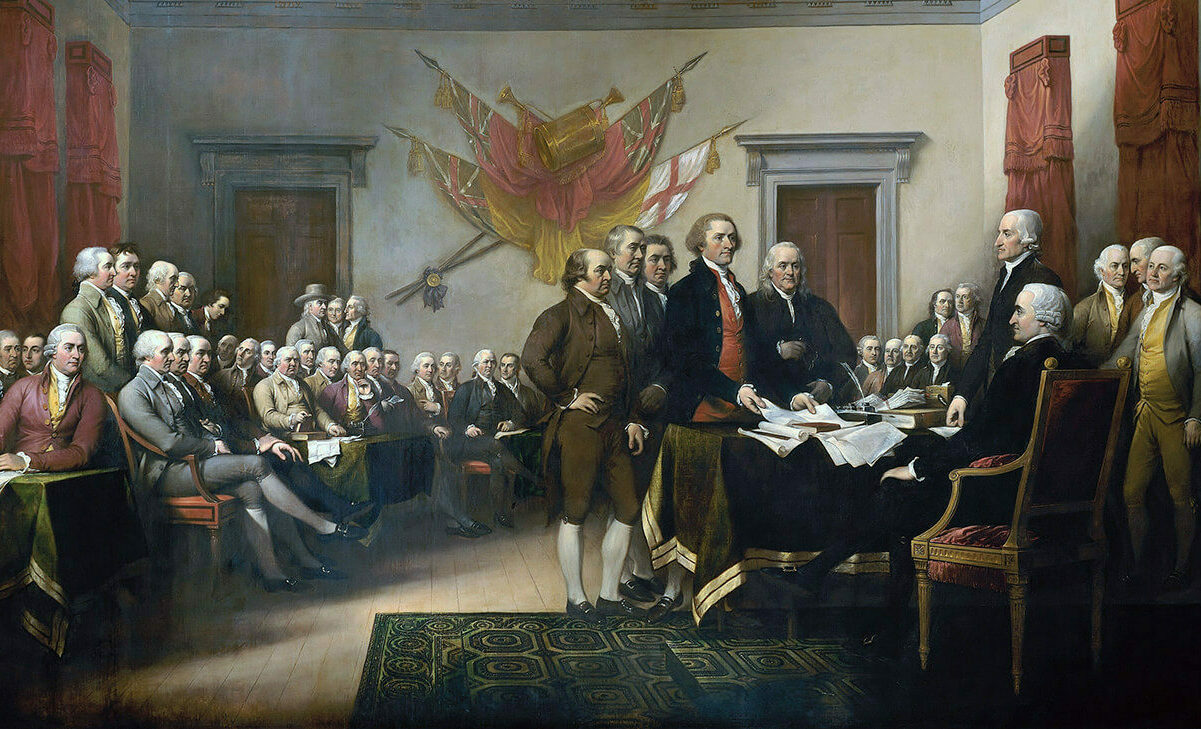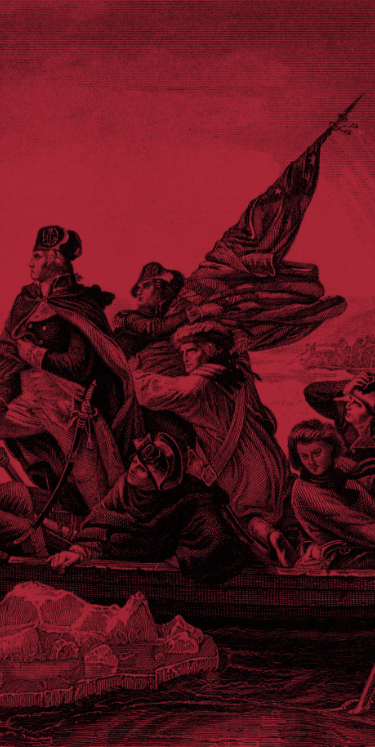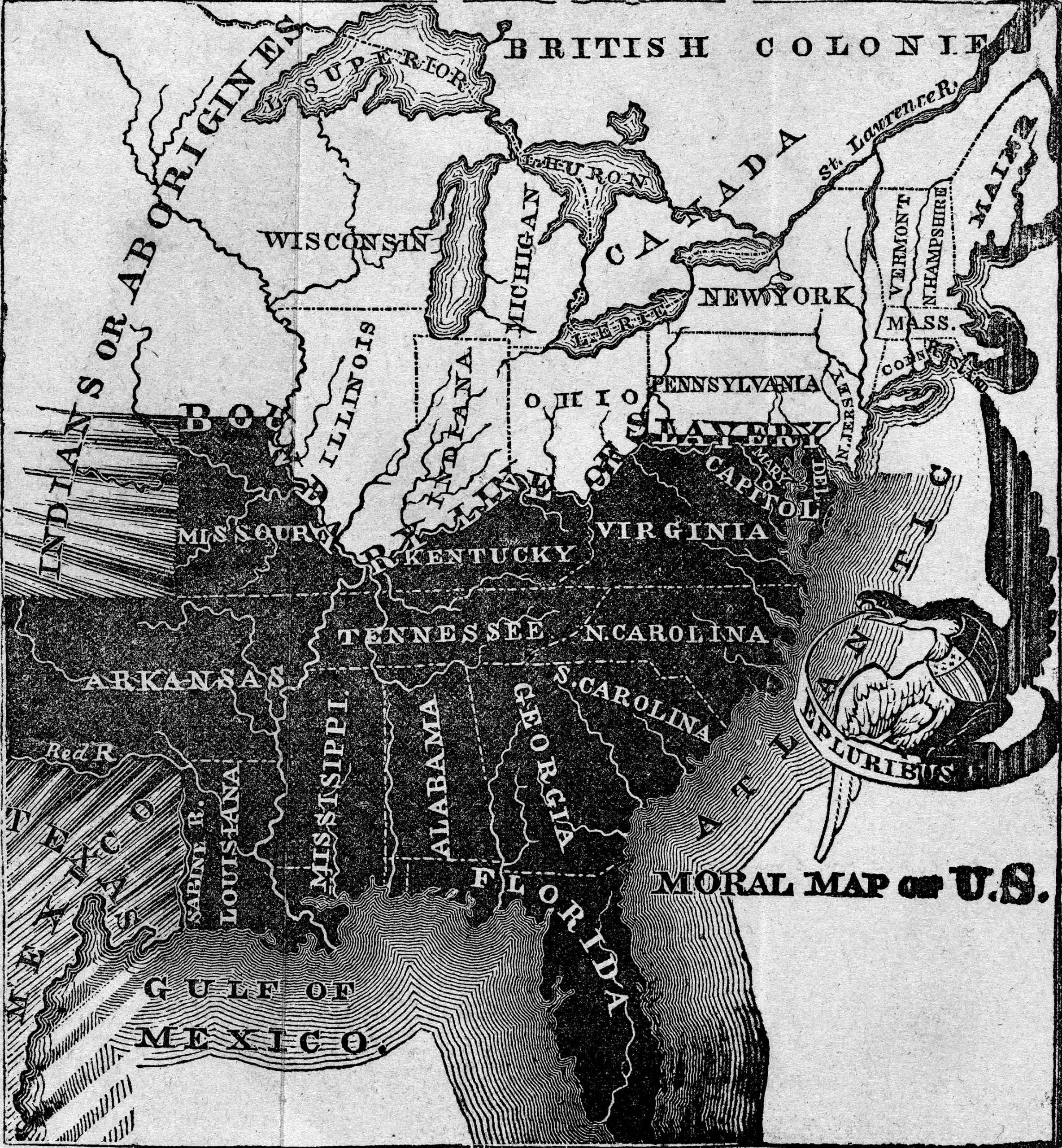
Recently the idea of American Exceptionalism has been ridiculed in academic and political circles with entire books dedicated to the purpose of tearing down any thought of an ethical America.[i] Much of this recent shift centers around America’s record on slavery. For instance, organizations such as the New York Times have started initiatives declaring that the “true founding” was not until the introduction of slavery 1619[ii] and that the “founding ideals were false” due to the existence of slavery.[iii]
The shift to a negative perspective of America largely stems from the revisionist school of history beginning in the 1960’s and culminating with Howard Zinn’s monumental 1980 People’s History of the United States. This book popularized the historiographical approach of doing “history from the bottom up,” which means telling the story of America through the interpretive lens of oppression. A fellow activist historian of Zinn’s, Staughton Lynd explains the fundamental premises underlying this approach in his Doing History from the Bottom Up. In their interpretive model, “was founded on crimes against humanity directed at…enslaved African Americans,” and therefore must be evil.[iv]
Such anti-American revisionism forgets that America’s record of anti-slavery actually is exceptional compared to the rest of the world. Rarely do revisionists remember that over half of the American states had passed laws abolishing slavery by 1804, nearly thirty years before William Wilberforce effected the similar results in England. This wide-scale abolitionism was planted by the Biblical beliefs of several early colonies, was watered by the advocacy and action of the patriots during the American Revolution, and finally brought forth fruit through the establishment of a Constitutional Republic designed to advance liberty and defend the ideals of the Declaration.
A careful review of the colonial anti-slavery context, the development of abolitionist thought during the War for Independence, and the staunch leadership of the pro-freedom Founding Fathers reveals how America led the way in abolishing slavery. Instead of the modern academic narrative which attempts to debunk American exceptionalism, history shows that America was exceptional in their struggle for emancipation.
As mentioned earlier, by 1804 all of the New England states as well as Vermont, New York, and New Jersey had either completely abolished slavery or enacted positive laws for the gradual abolition of it. This is four years before the Federal Congress ends the slave trade, and almost three decades before England votes to follow suit and abolishes slavery. The American wave of emancipation constituted the largest group of people who had voluntarily freed their slaves up to that point in modern history.
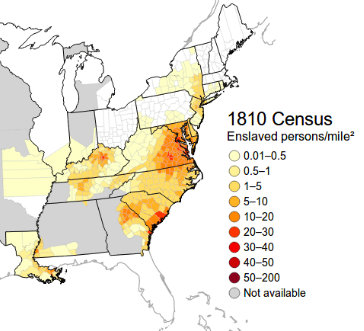 The 1810 census documents that the total population of those states—Massachusetts (Maine included), New Hampshire, Rhode Island, Connecticut, Vermont, Pennsylvania, New York, and New Jersey—stood at 3,486,675.[v] This was approximately 48% of the total population, slave and free, of the United States at that time. Although not entirely free of slavery due to the gradual emancipation laws in states such as New York and New Jersey, the total percentage of the population waiting for emancipation was only 0.9% in states originally a colony. So, by 1804 half of America had succeeded in passing laws for the abolition of slavery, and only six years later they had been 99% effective in accomplishing that goal. Nobody else in the world was anywhere close to what those Northern States had succeeded in doing—in this America was exceptional.
The 1810 census documents that the total population of those states—Massachusetts (Maine included), New Hampshire, Rhode Island, Connecticut, Vermont, Pennsylvania, New York, and New Jersey—stood at 3,486,675.[v] This was approximately 48% of the total population, slave and free, of the United States at that time. Although not entirely free of slavery due to the gradual emancipation laws in states such as New York and New Jersey, the total percentage of the population waiting for emancipation was only 0.9% in states originally a colony. So, by 1804 half of America had succeeded in passing laws for the abolition of slavery, and only six years later they had been 99% effective in accomplishing that goal. Nobody else in the world was anywhere close to what those Northern States had succeeded in doing—in this America was exceptional.
Massachusetts itself has the honor of being the only state to have totally abolished slavery by the time the first census was completed in 1790, and Vermont was not far behind with only seventeen slaves left to be liberated by their laws.[vi] Massachusetts also receives distinction for passing potentially the earliest anti-slavery law in the American colonies within the 1641 enactment of the Massachusetts Body of Liberties. The tenth capital crime in that legal code stated that, “if any man stealeth a man or mankind, he shall surely be put to death. Ex. xxi.16.”[vii] Taken from the Bible as evidenced by the scriptural citation, manstealing was interpreted by the New England colonists to include what they considered improper enslavement—later it was to expand to all vestiges of slavery.
Blackstone describes manstealing as, “the forcible abduction or stealing away of a man, woman, or child, from their own country, and sending them into another.”[viii] Going further to say, “this is unquestionably a very heinous crime, as it robs the king of his subjects, banishes a man from his country, and may in its consequences be productive of the most cruel and disagreeable hardships.”[ix]
This law was not simply an empty letter either, and when the first instance of manstealing occurred in 1646 the General Court of Massachusetts was vigorous in its prosecution. The record explains that:
The General Court, conceiving themselves bound by the first opportunity to bear witness against the heinous and crying sin of man stealing, as also to proscribe such timely redress for what is past, and such a law for the future as may sufficiently deter all others belonging to us to have to do in such vile and most odious courses, justly abhorred of all good and just men, do order that the negro interpreter, with others unlawfully taken, be, by the first opportunity, (at the charge of the country for present,) sent to his native country of Ginny, and a letter with him of the indignation of the Court thereabouts, and justice hereof, desiring of honored Governor would please put this order in execution.[x]
Interestingly, the Court chose to go farther than the law necessarily required, deciding to send back the slaves at the cost of the community. After making arrangements for the liberated slaves, the General Court then, “appointed a committee to examine witnesses and draw up the case about Captain Smith and Mr. Kezar killing stealing, and wronging of the negroes, etc.”[xi] This response to the arrival of a slave ship is markedly different than when the first one arrived on the shores of Jamestown, and it indicates an entirely different culture which from an extremely early period looked down upon the slave trade.
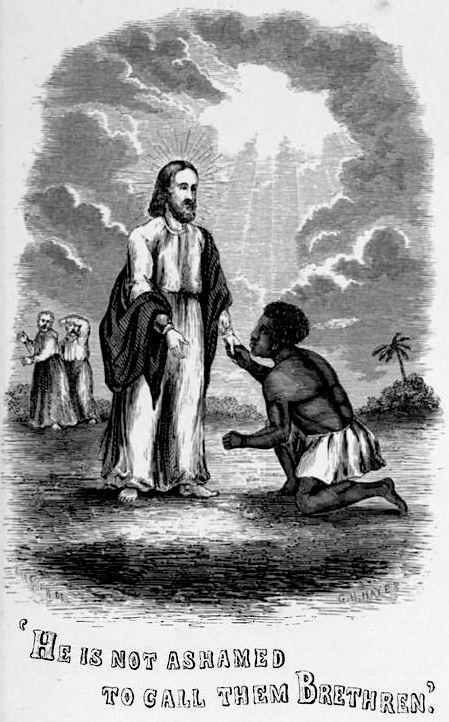
Their reliance upon the Bible to begin to understand their relationship to slavery led New Englanders down a dramatically different path than both the Southern colonies and the world. Instead of viewing enslavement as a natural product of race, they understood it arose out of either personal misfortunes (such as debt) or bad choices (such as crime). The New England slaves therefore attained levels of rights unheard of practically anywhere else.
The Puritans’ idea of a “Bible commonwealth” relied upon the Mosaic laws for much of their own statutes concerning servitude. Therefore, slaves had an increased level of social status with rights including the right to own property, testify in court against white men, wives could not be compelled to testify against their husbands, had legal standing to sue which included suing their masters for freedom.[xii] Additionally, enslaved people had the equal procedural rights within the courtroom which, together with the right to sue, led many slaves to advocate for freedom through the New England government.[xiii]
The wider context of slavery both domestically and globally makes North America’s record even more exceptional. First it must be noted that slavery has existed within every culture historically documented. In fact, the story of American slavery begins long before Christopher Columbus ever dreamed of sailing across the ocean sea. The native tribes he discovered all had slaves and on a whole it is estimated that 20 to 40 percent of native populations were slaves, making the native Americans on par with the slave empires of Greece and Rome.[xiv] This native American tradition of slavery continued uninterrupted by colonization, and by 1860, 12.5% of the population in the Indian Nations were black slaves, equaling one slave for every eight Indians.[xv]
Expanding the scope of inquiry even wider, throughout the nearly 400 years of the trans-Atlantic slave trade 12,521,337 Africans were taken to be slaves around the world. Only a small minority of that number ever embarked to the areas that would become the United States—305,326 to be exact, totaling 2.4%.[xvi] For comparison, Spain and her territories received 1,061,524 slaves during that same period representing nearly 8.5%, and France only barely received more with 11% (1,381,404). Next was Great Britain with 3,259,441 slaves taken from Africa, meaning that over one quarter (26%) of all slaves sourced from the African continent were intended for English lands. That, however, pales in comparison to Portugal and Brazil, where 5,848,266 enslaved humans were shipped—nearly 47% of the total number. Even the Netherland had more stake in the trans-Atlantic slave trade than America did, themselves accounting for 554,336 and 4.4%.[xvii]
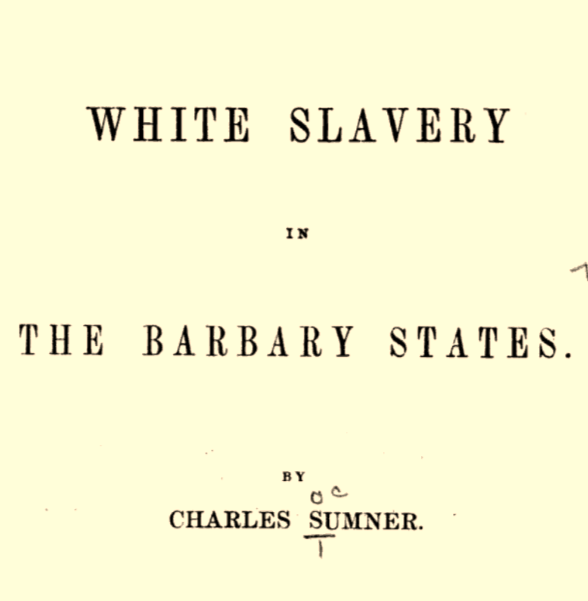 What is more, slavery both globally and in America was never simply white on black. Just as every people group has owned slaves, every people group has correspondingly been enslaved. Prior to the 1700s there were more white slaves globally than there were black slaves.[xviii] In fact, early records from Massachusetts reveal that in December of 1738 several white men were sentenced to slavery for a variety of crimes. One had been an indentured servant who physically assaulted the man he was working for, and then “did conspire also against the life of his said whole common wealth,” and two others for theft alongside breaking and entering.[xix] The next year the Massachusetts court similarly sentenced another white criminal to slavery for attempted rape.[xx]
What is more, slavery both globally and in America was never simply white on black. Just as every people group has owned slaves, every people group has correspondingly been enslaved. Prior to the 1700s there were more white slaves globally than there were black slaves.[xviii] In fact, early records from Massachusetts reveal that in December of 1738 several white men were sentenced to slavery for a variety of crimes. One had been an indentured servant who physically assaulted the man he was working for, and then “did conspire also against the life of his said whole common wealth,” and two others for theft alongside breaking and entering.[xix] The next year the Massachusetts court similarly sentenced another white criminal to slavery for attempted rape.[xx]
In addition to white slavery in America, Americans themselves were sold into slavery in the Barbary Coast of North Africa after being captured by Muslim slave traders. Charles Sumner, the famous abolitionist and founder or the Republican party, documented that fourteen men from Boston and Philadelphia would fetch $34,792 in the African slave market of 1785.[xxi] Beyond just the American sailors, the Muslim Barbary Pirates conducted extensive slave raids along the European coast, meaning that:
“Between 1530 and 1780 there were almost certainly a million and quite possibly as many as a million and a quarter white, European Christians enslaved by the Muslims of the Barbary Coast.”[xxii]
Just as there were white slaves both in America and the world, there also were black slave masters. Carter Woodson, often considered the “Father of Black History,” conducted a close study of the 1830 census data in order to investigate rates of free blacks who themselves owned slaves. His research revealed that, out of those free blacks who were eligible to own slaves (head of households living in states which would later join the Confederacy), 16% of them owned black slaves.[xxiii] Certain states, however, stand out in their relatively high frequency. South Carolina for instance saw 43% of eligible free black people own slaves, 40% in Louisiana, 26% in Mississippi, 25% in Alabama, and 20% in Georgia.[xxiv] Such statistical data simply shows just how varied the institution of slavery was throughout both history and the American story—far from the monolithic image presented by revisionists.
With so much of the world having been embroiled with slavery and the slave trade for hundreds of years, it makes the actions of America not only unique but remarkable. By the time the 18th century began, many of the northern colonies began passing laws which established duties on importing slaves. The intent was for such acts cut away the slaver’s profit margin and therefore making it economically undesirable to import slaves into those regions. In 1700 elements of the Massachusetts citizenry petitioned the legislature for restrictive duty on slaves “to discourage the bringing of them” of forty shillings.[xxv] The next year the colony sought to set a limit to the period of slavery that a person could serve, and in 1705 they were successful in obtaining a four-pound import duty.[xxvi] Rhode Island had passed a slightly smaller duty two years earlier of a still substantial three-pounds.[xxvii]
Other colonies such as New York and Pennsylvania attempt to pass even more restrictive bills regulating the slave trade into relative non-existence but many of their efforts were vetoed by the authority of the Crown.[xxviii] The Royal veto of anti-slavery measures, often because of the economic benefit which England derived from the global trade, became a common response to colonial attempts at restricting slavery.
Nearly seventy years later such practices nearly made it into the Declaration of Independence after appearing in Thomas Jefferson’s draft and being approved by Benjamin Franklin and John Adams. The grievance against the slave trade was the longest out of all of them, occupying the better part of a page in addition to having the most words underlined or capitalized outside of the title. The grievance in the draft reported to Congress read as follows:
He has waged cruel war against human nature itself, violating its most sacred rights of life and liberty in the persons of distant people, who never offended him, captivating and carrying them into slavery in another hemisphere, or to incur miserable death in their transportation tither. This piratical warfare, the opprobrium of infidel powers, is the warfare of the Christian king of Great Britain. Determined to keep open a market where Men should be bought and sold, he has prostituted his negative for suppressing every legislative attempt to prohibit or to restrain this execrable commerce.[xxix]
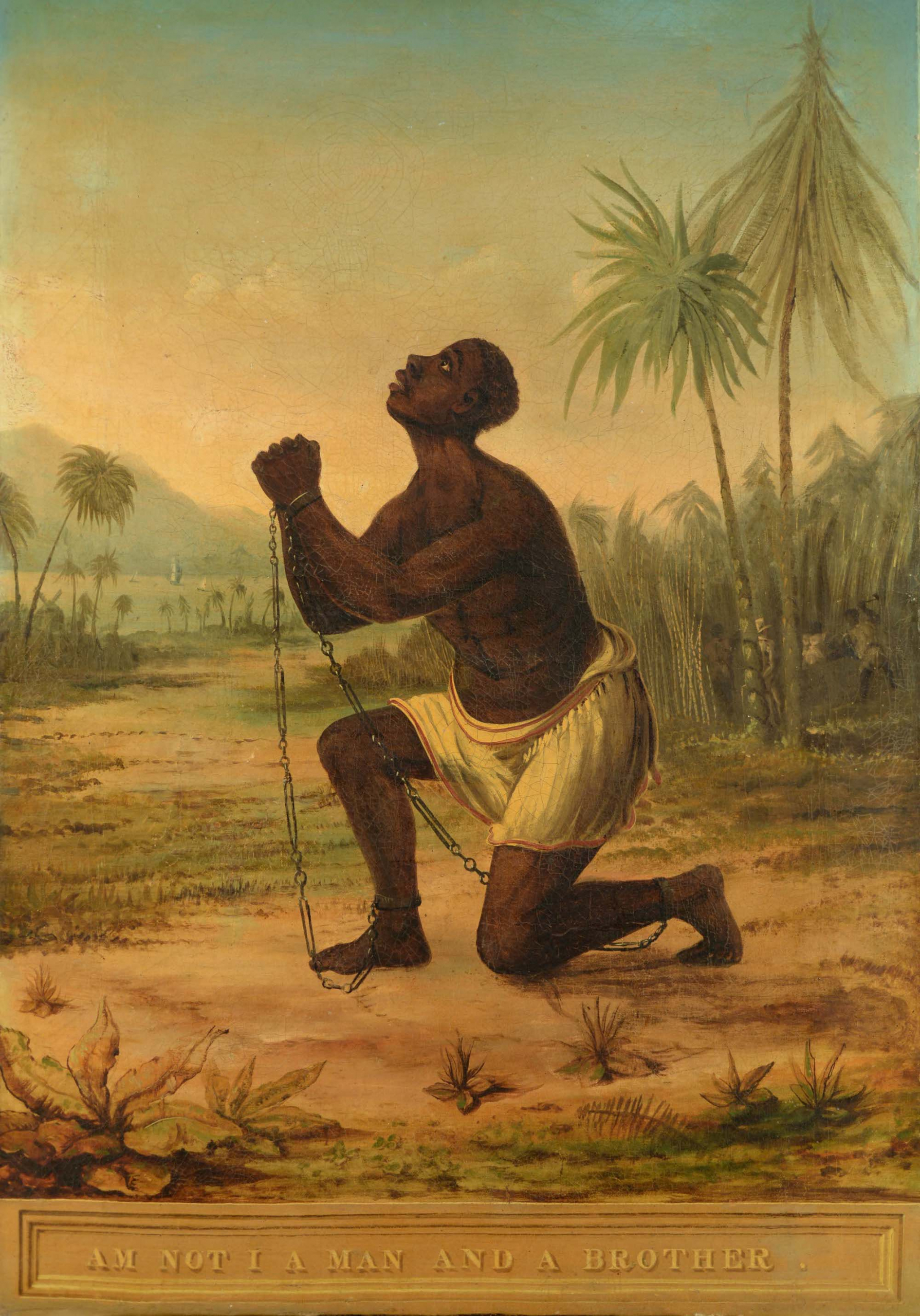
Many other Founding Fathers agreed with Jefferson—in fact, the majority of Founding Fathers agreed with him. Only two states voted against the grievance thus keeping it out of the final Declaration of Independence.
(It should also be noted that although many today claim that when the Declaration states that “all men are created equal” the Founding Fathers really meant to say “all white men are created equal,” Jefferson himself explicitly identifies slaves as men and thereby included in the American promise.)
With over a century of anti-slavery activity, it should come as no surprise to see a dramatic increase in manumissions and widespread emancipation during and immediately following the War for Independence. From 1790 to 1810 the number of free blacks in America increased from 59,466 to 108,395, displaying a growth rate of 82%. The next decade saw that number expand another 72% to 186,446.[xxx] While the number continued to grow albeit at a lower rate of growth in the years leading up to the Civil War, those first two decades of the American Republic saw the strongest rate of voluntary emancipation ever recorded up to that time. It is this period which Arthur Zilversmit calls the First Emancipation.[xxxi]
John Adams, an attorney prior to becoming a politician, recalled the environment of emancipation during those years saying:
“I was concerned in several Causes, in which Negroes sued for their Freedom before the Revolution.…I never knew a Jury, by a Verdict to determine a Negro to be a slave—They always found them free.”[xxxii]
During the Revolution itself many slaves who fought for freedom from England also achieved freedom from slavery, being manumitted on account of their service. William Whipple, signer of the Declaration and General under Washington, freed his slave, Prince Whipple during campaign after realizing the incongruity of his own actions.[xxxiii] Another veteran of the Revolutionary War, a slave named Prime, was actually re-enslaved after the war but, with the help of anti-slavery advocates, he successfully petitioned for his emancipation, winning his freedom not only on the battlefield but in the courtroom as well.
Upon examining this period, renown historian Benjamin Quarles remarked that the War for Independence and the environment leading up to it empowered the black population with the tools and personal agency to reach for their freedom as Americans. He writes that the slaves, “gave a personal interpretation to the theory of natural rights and the slogans of liberty and independence,” and many white leaders who were awakening to the injustice helped them in that greater revolution.[xxxiv]
This brief examination of the overarching facts and context concerning America’s early history with slavery shows that the story is infinitely more nuanced than the revisionist narratives propagated by Zinn, Lynd, and the New York Times. The real history, however, reveals that America’s record for anti-slavery is exceptional when placed in the context of the world at that time. Instead of presenting a view of history as if it Jamestown won the ideological battle for America, historians today must realize that the tree of slavery was choked out by the tree of liberty. That the ideas of Plymouth overcame those of Jamestown.
The story of the northern colonies, when properly told, shows that America was among the first places in the world to lead a successful fight against slavery in both word and deed. Furthermore, the anti-slavery Founding Fathers paved the path which many of the global abolitionist followed in the decades to come. America ought not to be remembered as a land of oppression but rather one of liberation. The New World has been the frontier of freedom from the beginning, being the first to struggle for emancipation and find large-scale success. Those small American Republics, carved out of the wilderness, showed a level of civilization unheard of at that early period, passing anti-slavery and abolition laws before virtually anywhere else in the world. America was indeed exceptional—a seedbed of liberty for themselves and the rest of the world.
[i] Andrew Bacevich, The Limits of Power: The End of American Exceptionalism (New York: Holt Paperbacks, 2009); Godfrey Hodgson, The Myth of American Exceptionalism (New Haven: Yale University Press, 2010).
[ii] “The 1619 Project,” The New York Times (accessed December 5, 2019), https://www.nytimes.com/interactive/2019/08/14/magazine/1619-america-slavery.html
[iii] Nikole Hannah-Jones, “Our Democracy’s Founding Ideals were False When They were Written,” The New York Times (December 5, 2019), https://www.nytimes.com/interactive/2019/08/14/magazine/black-history-american-democracy.html
[iv] Staughton Lynd, Doing History from the Bottom Up: On E. P. Thompson, Howard Zinn, and Rebuilding the Labor Movement from Below (Chicago: Haymarket Books, 2014), xii.
[v] Aggregate Amount of Each Description of Persons Within the United States of America, and the Territories Thereof (Washington: 1811), 1.
[vi] The American Almanac and Repository of Useful Knowledge for the Year 1858 (Boston: Crosby, Nicholas, and Company, 1858), 214.
[vii] Francis Bowen, editor, Documents of the Constitution of England and America, from Magna Charta to the Federal Constitution of 1789, (Cambridge: John Bartlett, 1854), 72.
[viii] William Blackstone, Commentaries on the Laws of England (London: A. Strahan and W. Woodfall, 1795), 4.218-219.
[ix] Ibid., 4.219.
[x] Nathaniel Shurtleff, Records of the Governor and Company of the Massachusetts Bay in New England (Boston: William Whites, 1853), 1.168.
[xi] Ibid., 1.176.
[xii] Arthur Zilversmit, The First Emancipation: The Abolition of Slavery in the North (Chicago: The University of Chicago Press, 1968), 19.
[xiii] Ibid.
[xiv] Fernando Santos-Granero, Vital Enemies: Slavery, Predation, and the Amerindian Political Economy of Life (Austin: University of Texas Press, 2009), 226-227.
[xv] Joseph Kennedy, Preliminary Reports on the Eighth Census, 1860 (Washington DC: Government Printing Office, 1862), 11.
[xvi] “Trans-Atlantic Slave Trade – Estimates,” Slave Voyages, https://www.slavevoyages.org/assessment/estimates (accessed December 6, 2019).
[xvii] Ibid.
[xviii] Philip Morgan, “Origins of American Slavery,” Organization of American History Magazine of History, Vol. 19, No. 4 (July 2005), p. 53
[xix] Nathaniel Shurtleff, Records of the Governor and Company of the Massachusetts Bay in New England (Boston: William Whites, 1853), 1.246.
[xx] Ibid., 1.269.
[xxi] Charles Sumner, White Slaves in the Barbary States (Boston: William D. Ticknor and Company, 1847), 32.
[xxii] Robert Davis, “Counting European on the Barbary Coast,” Past &Present, No. 172 (August 2001), 118.
[xxiii] Thomas J. Pressly, “‘The Known World’ of Free Black Slaveholders: A Research Note on the Scholarship of Carter G. Woodson,” The Journal of African American History 91, no. 1 (2006): 85.
[xxiv] Ibid.
[xxv] Zilversmit, The First Emancipation, 51.
[xxvi] Ibid.
[xxvii] Ibid.
[xxviii] Ibid., 47-49.
[xxix] Thomas Jefferson, The Works of Thomas Jefferson, edited by Paul Leicester Ford (New York: G. P. Putnam’s Sons, 1904), 210-211.
[xxx] Kennedy, Preliminary Reports, 7.
[xxxi] Zilversmit, The First Emancipation.
[xxxii] Collections of the Massachusetts Historical Society (Boston: Massachusetts Historical Society, 1877), 401-402.
[xxxiii] William Nell, Colored Patriots of the American Revolution (Boston: Robert Wallcut, 1855), 198.
[xxxiv] Benjamin Quarles, “The Revolutionary War as a Black Declaration of Independence,” Slavery and Freedom in the Age of the American Revolution, edited by Ira Berlin (Charlottesville: The University Press of Virginia, 1983), 285.
*Originally published: April 6, 2020
* This article concerns a historical issue and may not have updated information.
Still looking for answers? Visit our FAQ page
More Resources
Know the Truth and Protect Your Freedoms.
Still looking for answers? Visit our FAQ page
Stay Informed with the Latest Resources
Enter your email address to receive our regular newsletter, with important information and updates right in your inbox!
